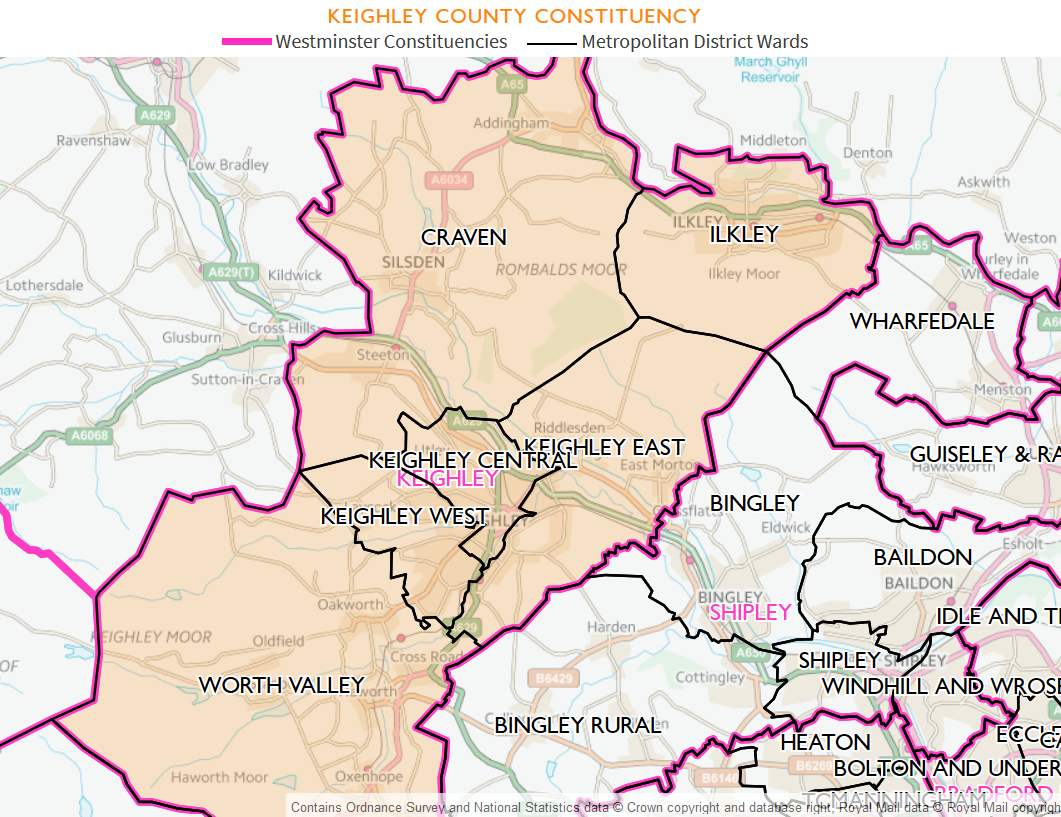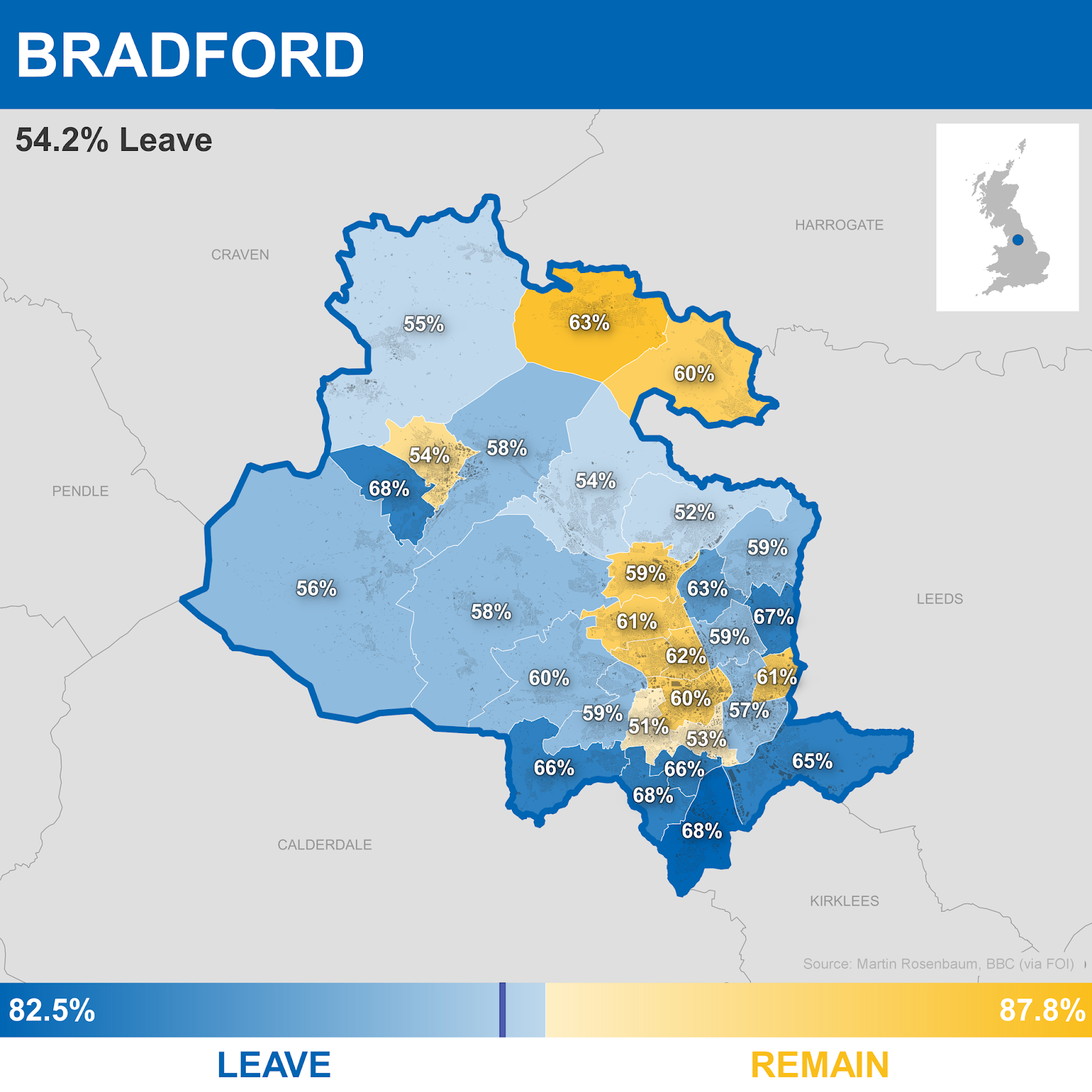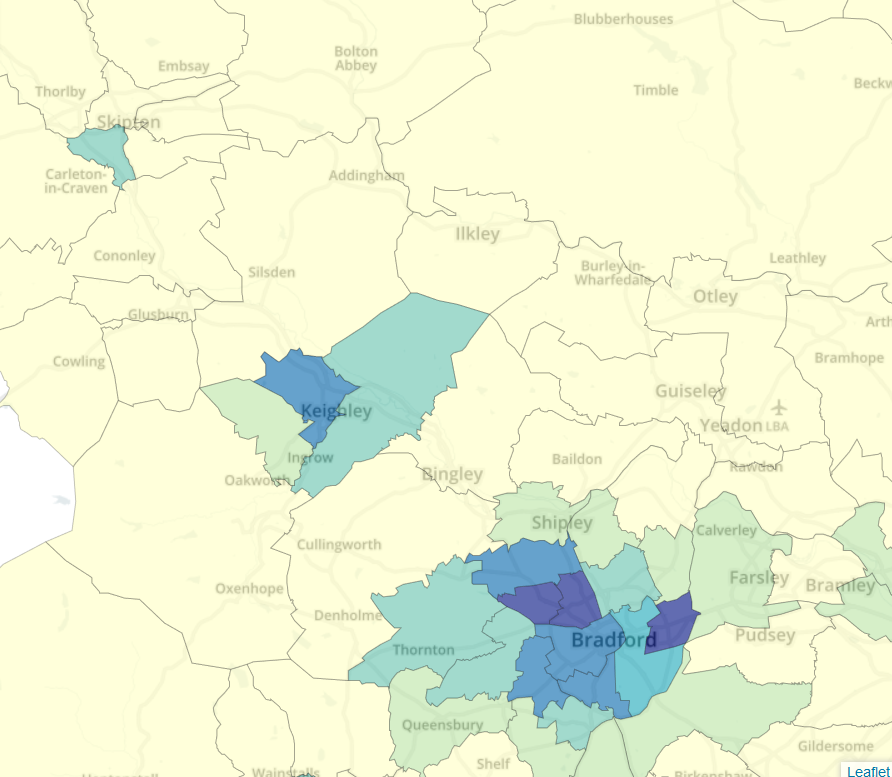So, there is an election coming and apparently it might be decided in Keighley, my home constituency. This is likely to be the third event to occur in the area, after the Tour de France went through in 2014 and Keighley Cougars RLFC won the 1995 second division championship, so I thought I’d devote a blog post to it.
This Twitter conversation points out that the seat is the Tories’ 8th national target, with a majority of only 249, but I suspect some people have strange ideas about the place, perhaps because they claim to be civilised adults without ever having visited it.
Here are the top 30 Tory target seats. Obviously they can forget the Scottish ones but plenty in North and Midlands and East look winnable. pic.twitter.com/qlsTb5Ya9B
— econhedge (@econhedge) October 8, 2019
Historically, Keighley has always been at least politically competitive and often very marginal. Wikipedia shows a fairly clear story – the seat was created in 1885 in order to represent the growing industrial town, it elected Liberals until the breakdown of the Liberal hegemony after the first world war, and since then it has regularly flipped between Labour and Conservative control. This is far from surprising when you open the box and take a look inside.
To get oriented, let’s look at a map. The Ordnance Survey has a nice tool for viewing electoral boundaries but it doesn’t do GMaps-style embeds, so here is a screen shot.
The seat is made up, roughly, of a classic West Yorkshire mill town in the three Keighley wards, plus a well-heeled outer suburb of Leeds or even Manchester in Ilkley, and an assortment of villages in Craven and Worth Valley wards. In a typical West Yorkshire way, these are often as much post-industrial as they are rural, although they have also been turning steadily into commuter suburbs ever since the A650 Aire Valley Trunk Road and some new railway stations were built in the 1980s. As you head up the hillside into Worth Valley or up the valley towards Cross Hills, you’ll also notice relics of the Radical Liberal heritage. At the far end of the moors is the monument to Philip Snowden MP, although it might be just outside the boundary.
In practical politics, this means that anyone trying to win Keighley has to face two distinct challenges. In the 1980s, Gary Waller held the seat for the Conservative Party by mobilizing farmers, suburbanites, and old money in the top half of the map while trying not to lose too badly in Keighley itself. Ann Cryer held it for Labour in the 2000s by running up the score in Keighley and picking up potential Lib Dems in the dales.
The problem for a Conservative challenger today is that running a Brexit-centric campaign to rile up the base and compete with the UKIP/Brexit Party means alienating Tory/Lib Dem or Tory/Labour switchers on the other hand, today’s version of the two distinct challenges. As such, Keighley might be a microcosm of wider politics. Let’s look at another map.

This is from Alasdair Rae’s blog. It’s a ward-level map of the 2016 referendum result in metropolitan Bradford, the local authority Keighley sits within. As you can see, the posh Ilkley ward went Remain by 63% while Keighley West, so post-industrial they literally abandoned some of the streets, was 68% Leave. This obviously puts a different complexion on the two distinct challenges, as the leave/remain split cross-cuts the party split. A Conservative challenger running a pure Brexit campaign cannot assume they will hold the base and pick up “Labour Leavers”; it’s precisely their base that will be the problem. The question is more whether they would vote Lib Dem, which would be pointless with a gap of 22,840 votes to make up, or Labour.
Now for the next map. Here’s a map of Bradford wards by the percentage of people declaring Pakistani ethnicity, from the 2011 census on UK Data Explorer.

Keighley Central was 43%; Keighley East 11.2%; Keighley West next door was 2.8%. Keighley Central stands out on the Leave/Remain map, but it’s worth remembering that it actually went Leave by slightly more than the national 52/48 split.
One of the less reported stories of recent British politics is that the Tories, after years of promising, finally began to get some traction with Asian voters (one of the few people who covers this is the New Statesman‘s Stephen Bush). The referendum was a case in point – in the Keighley context, the failure to get Central ward even to 50/50 is as significant as the West ward’s honking Leave vote. An important question for anyone who wants to take Keighley is whether this trend is now reverting to the mean. This is another way in which Keighley might be a national microcosm. After all, anyone who commits to looking for Labour Leavers in Keighley West also commits to alienating Keighley Central, and the total of the two is about 40 per cent of the GE2017 turnout for the whole constituency. Looking at the target list, this could be an issue in Dudley North.
From a Labour point of view, I would suggest having another read of this surprisingly good voxpop piece that did in fact predict the 2017 gain and then the final policy legacy of George Osborne.
Permalink
To add my usual boring structural analysis – “In what ways has nearly a decade of Tory governments improved the lives of marginal voters in the Keighley area?”
I don’t know Keighley well enough to comment, but going from similar areas in other parts of Yorkshire that I do know, the answer seem to me to be: “not really sure” – which isn’t a sure sign that Labour are home and dry, but I think it is an important corrective factor to narratives of a Tory surge.
I understand from the Today programme Keighley is one of the “Rugby League” seats the Tories are targeting. Gerremonside!!!